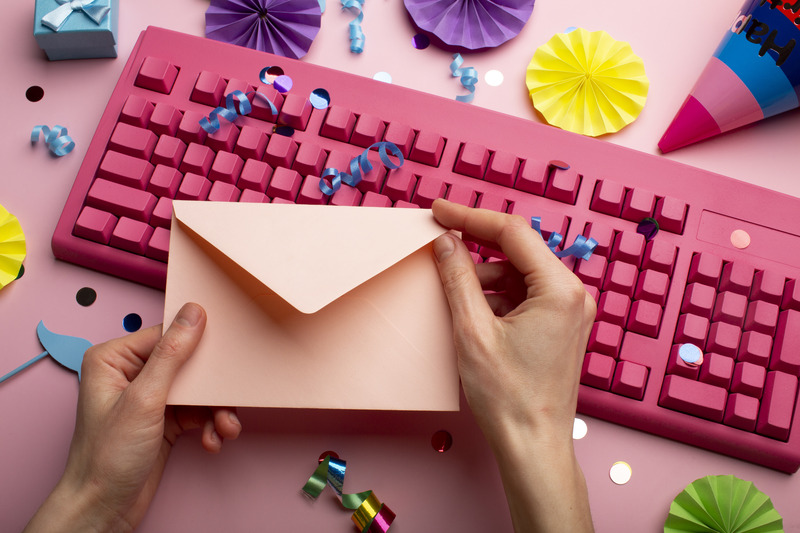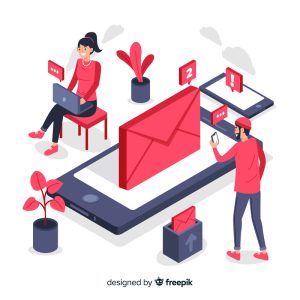
Mastering Email Marketing: A Comprehensive Guide for 2025
You said:
ChatGPT said:
You said:
ChatGPT said:
Email Marketing Automation: The Key to Efficiency
Email marketing automation is one of the most powerful tools at your disposal for scaling your campaigns while saving time and effort. With automation, you can set up a series of emails that are triggered based on specific actions, ensuring that your emails are sent at the right moment, without the need for manual intervention.
1. Automated Welcome Emails
Welcome emails are your first chance to make a strong impression on new subscribers. They are typically sent immediately after someone subscribes to your list, providing an opportunity to introduce your brand, set expectations, and offer value right away.
- Example Workflow: A welcome email series could include a thank-you message for subscribing, a brief overview of your business, and a special offer or discount to encourage the subscriber to take action, such as making their first purchase.
2. Abandoned Cart Emails
For e-commerce businesses, abandoned cart emails are essential for recovering lost sales. When a potential customer adds items to their cart but leaves before completing the purchase, an abandoned cart email can be triggered to remind them of the items they left behind.
- Personalized Offers: These emails can include images of the abandoned items, a link to return to their cart, and even a special discount code to incentivize the purchase.
3. Re-engagement Campaigns
Subscribers can become disengaged over time, especially if they haven’t opened your emails in a while. Re-engagement campaigns aim to win back these inactive subscribers with targeted messaging.
- Example: A re-engagement email series might start with a simple “We Miss You” message, followed by an offer or exclusive content. If there’s no engagement, you can then send a final email offering them the option to opt-out or update their preferences.
4. Birthday and Anniversary Emails
Sending personalized emails to celebrate important dates like birthdays or anniversaries helps build a personal connection with your audience. A simple, thoughtful message coupled with an exclusive discount or gift can go a long way in fostering loyalty.
Advanced Email Segmentation Strategies
While basic segmentation (such as age or location) is crucial, advanced segmentation can take your email marketing to the next level. By segmenting your audience based on behavior, preferences, and engagement, you can create highly targeted campaigns that resonate with each recipient.
1. Behavior-Based Segmentation
One of the most effective ways to segment your email list is by using behavioral data. For example, segmenting based on a subscriber’s past interactions, such as what pages they’ve visited on your website, which products they’ve purchased, or how frequently they’ve opened your emails, can lead to more relevant campaigns.
- Example: If a user has previously purchased a specific product, you can send them personalized recommendations or follow-up emails with related items. Similarly, if someone has viewed a particular category of products on your website but didn’t make a purchase, you can send them a targeted email with a special offer for those products.
2. Engagement-Based Segmentation
Not all subscribers are equally engaged with your emails. Some may open and click through every email, while others may rarely engage. Segmenting based on engagement levels allows you to send more relevant emails and fine-tune your frequency.
- Highly Engaged Subscribers: For these subscribers, you might want to send them more frequent updates, special offers, or exclusive content to keep them interested.
- Inactive Subscribers: For subscribers who haven’t interacted with your emails in a while, try sending re-engagement emails or reduce the frequency of emails to prevent overwhelming them.
3. Lifecycle-Based Segmentation
Segmenting based on where a subscriber is in the customer lifecycle is another powerful strategy. Whether a customer is a first-time visitor, a lead, or a loyal customer, their needs and expectations from your emails will vary.
- Example: For new subscribers, send educational or introductory emails. For repeat buyers, send loyalty offers or exclusive deals. For high-value customers, offer VIP treatment and special perks to reinforce their loyalty.
Common Email Marketing Mistakes to Avoid
While email marketing is an incredibly effective tool, there are common mistakes that can hinder your success. Avoiding these errors will help you ensure that your campaigns are effective and lead to better results.
1. Neglecting Mobile Optimization
With a significant percentage of emails being opened on mobile devices, it’s essential that your emails are designed with mobile users in mind. If your emails are hard to read or navigate on mobile devices, you risk losing valuable engagement.
- Tip: Always use responsive email design. Ensure that your images, text, and buttons adjust properly for smaller screens. Keep your layout clean and simple for mobile users.
2. Sending Too Many Emails
While email marketing is a powerful tool, bombarding your subscribers with too many emails can quickly lead to unsubscribes. Overloading your audience with constant messages can lead to email fatigue and cause them to opt-out or mark your emails as spam.
- Tip: Pay attention to your email frequency and analyze subscriber engagement. Test different frequencies to find the right balance between staying top of mind and respecting your audience’s inbox.
3. Ignoring Email List Hygiene
Maintaining a clean and up-to-date email list is crucial for avoiding high bounce rates and ensuring that your emails reach the right people. Regularly cleaning your email list to remove inactive or invalid email addresses will improve your deliverability rates and engagement.
- Tip: Use list-cleaning tools to identify and remove inactive subscribers. Set up re-engagement campaigns to win back dormant users before removing them from your list entirely.
4. Not Testing Your Emails
One of the best ways to improve your email campaigns is by constantly testing different elements. From subject lines to email designs and CTAs, A/B testing helps you determine what works best for your audience.
- Tip: Experiment with subject lines, CTA buttons, email layouts, and send times to find the optimal combination that drives the best results.
The Future of Email Marketing: What to Expect in 2025
Email marketing continues to evolve, and staying ahead of the trends will be key to maintaining a competitive edge. Let’s explore some of the trends and innovations that are expected to shape the future of email marketing in 2025 and beyond.
1. AI and Automation Integration
Artificial intelligence (AI) is rapidly transforming email marketing by making it more efficient and personalized. From AI-powered subject line generators to predictive analytics that help forecast the best time to send emails, AI is playing a bigger role in automating tasks and improving targeting.
- Example: AI can analyze customer data to predict which products a subscriber is most likely to purchase, allowing you to send hyper-targeted email recommendations based on past behavior.
2. Interactive Emails
Interactive emails are becoming increasingly popular. These emails contain elements like carousels, polls, surveys, and interactive CTAs that encourage recipients to engage directly within the email itself.
- Benefit: Interactive emails not only stand out in the inbox but also help boost engagement by providing a richer, more dynamic experience for the reader.
3. More Privacy and Data Protection
With increasing concerns over data privacy, email marketers will need to ensure that they’re fully compliant with regulations like GDPR and CCPA. In the future, privacy-conscious subscribers may demand even more control over how their data is used.
- Tip: Stay updated with privacy regulations and ensure that you provide transparent options for subscribers to control their data preferences.
4. Hyper-Personalization
Hyper-personalization involves using data such as browsing history, purchase behavior, and preferences to create emails that feel deeply tailored to individual recipients. As technology advances, this level of personalization will become more accessible, allowing businesses to deliver even more relevant content to their audience.
- Example: An email that acknowledges the subscriber’s recent activity, such as reviewing a product or clicking a specific link, can make the email feel more relevant and personal.
Conclusion: Mastering Email Marketing for Long-Term Success
Email marketing in 2025 is about more than just sending messages to your list. It’s about creating personalized, targeted, and valuable experiences that foster relationships with your audience. By leveraging automation, advanced segmentation, and continually optimizing your campaigns, you can ensure that your emails remain effective in a crowded inbox.
The future of email marketing will be shaped by advances in technology, changes in consumer expectations, and an ever-increasing need for personalization. Staying ahead of the trends, continually testing, and refining your approach will help you build lasting relationships with your audience and drive higher engagement, conversions, and ROI.
By following the strategies and best practices outlined in this guide, you’re well on your way to mastering email marketing in 2025.


